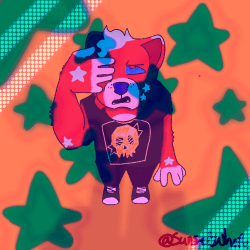3D modelling continued
For our class task, we had to make and model a milkshake, a flower, and a vase. I found the milkshake really enjoyable, and I found it a lot easier than the previous assignments, so I can already see the improvement since at first I couldn’t do anything in the blender, and now I can see my improvements unfold in front of me.
The flower vase was more difficult, and while I got it modelled, I couldn’t get it coloured, but it gave me much more difficulty than the milkshake, but I can see that it helped me improve.
Curves, which are composed of various splines, were also introduced to us by the milkshake and flower. Splines come in two distinct varieties:
Poly splines: the most basic type of spline because they don’t interpolate the curve’s shape between control points.
Bezier: Control points and handles are the primary components utilised in the editing of Bézier curves. The actual curve, or a segment, lies between two control points. The handles determine how the segment curves.
Bezier splines come with four distinct handles, each of which produces a different outcome. For instance, automatic handles are yellow and are automatically adjusted by the blender in terms of both length and direction. Vector handles enable the creation of sections and curves with crisp corners. Aligned handles are purple and consist of straight lines, creating the illusion of rounded corners and gentle curves. The free handles move apart from one another.
For the milkshake straw the handles that I utilised the most were vector and aligned, and the flower the same situation.

For the assignment this week, we had to model ‘Zubat’ from Pokemon. It was very difficult as I couldn’t get the spine of the wing to duplicate and have depth, but I got it done in the end, and although I haven’t animated him, I feel very happy that I got him done.
Zubat’s general body shape was obtained by modelling him using a UV sphere after we imported a 2D image of him into Blender as a reference. The reference served as a helpful tool to ensure our accuracy, particularly when dealing with more difficult structures like the wings and their spines.
Additionally, the proportional editing tool was presented to us. It allows you to alter selected elements while simultaneously modifying adjacent unselected elements. An unselected element will be less affected the further away it is; however, you can change that so that more elements are affected. The edges of the zubat mouth were extremely sharp because I had cut it out of the reference image using the knife tool. To give the mouth a more even and organic appearance, I used proportional editing on the vertices. The same was true for the wings and spines of the wings, where proportional editing was used to move and give them a sharper point.

